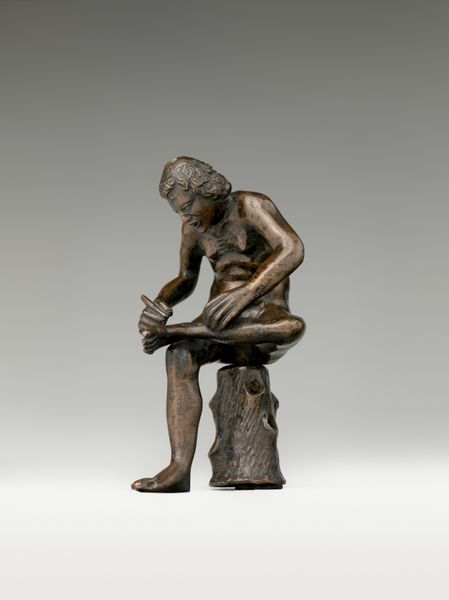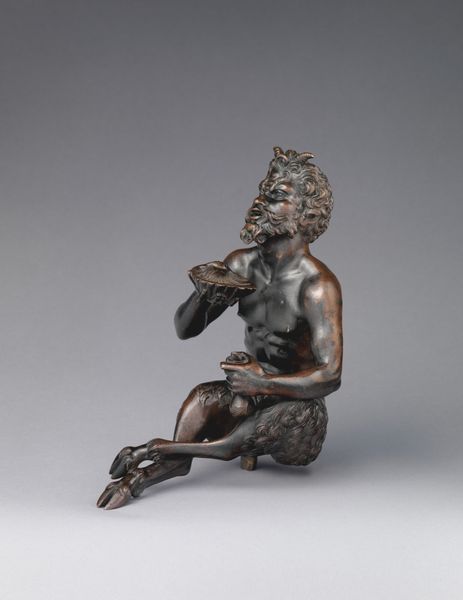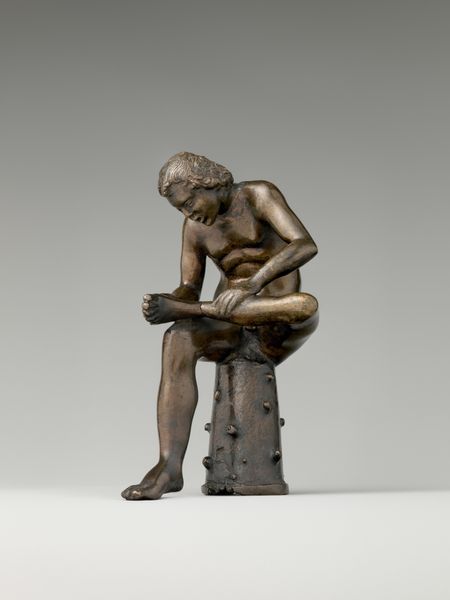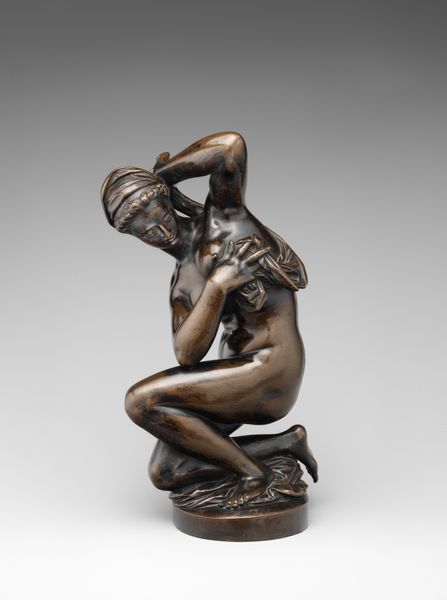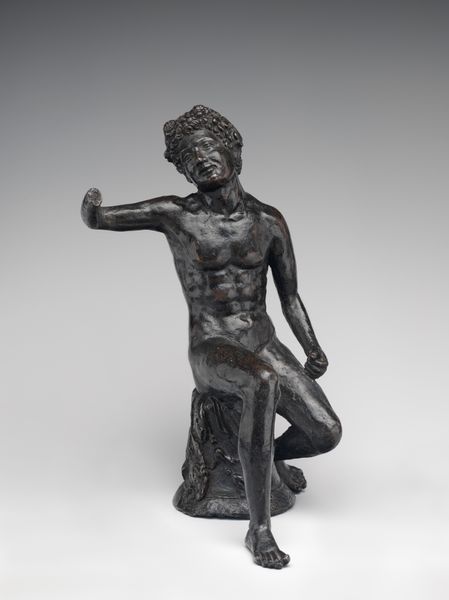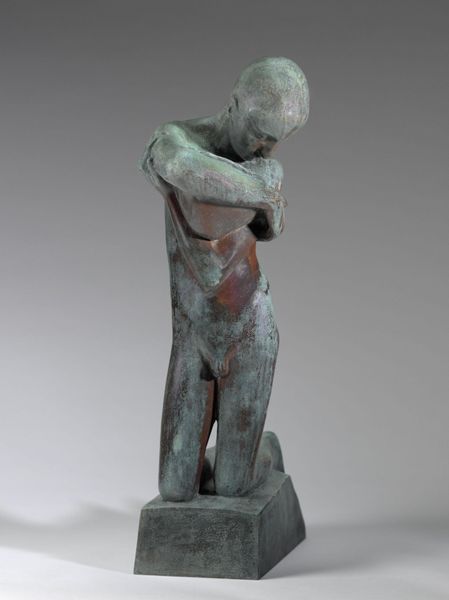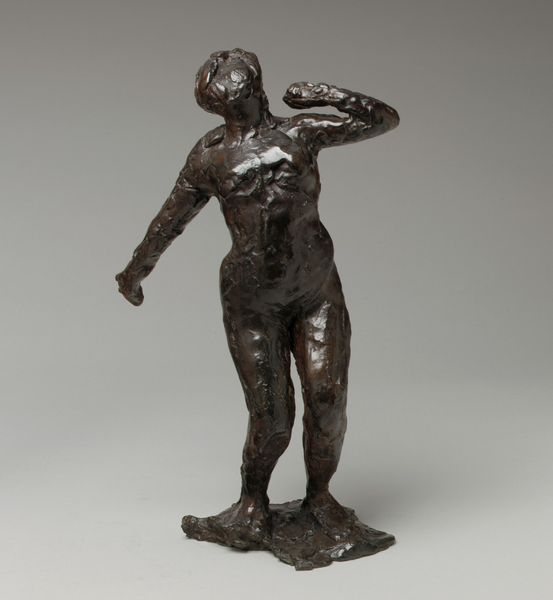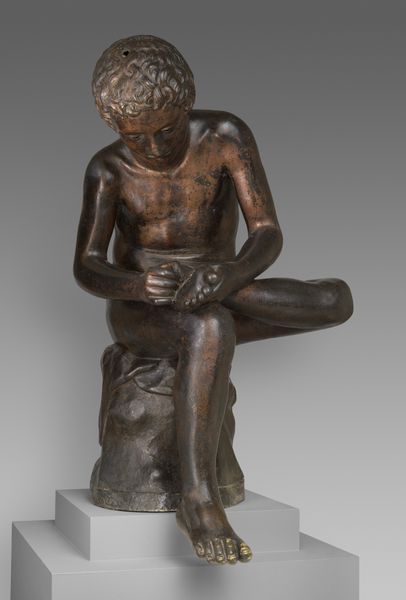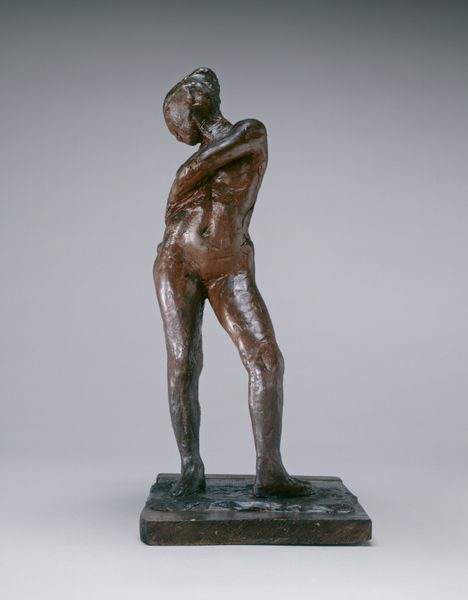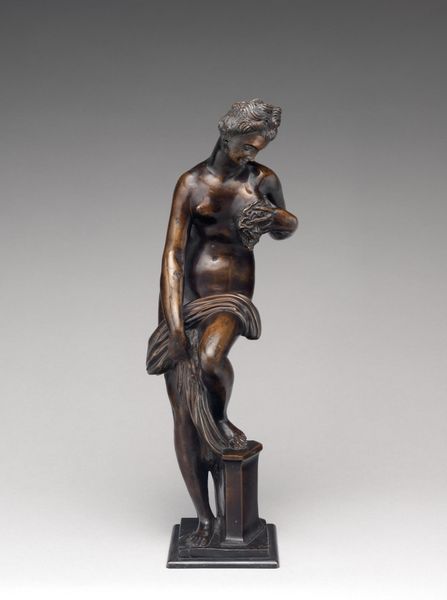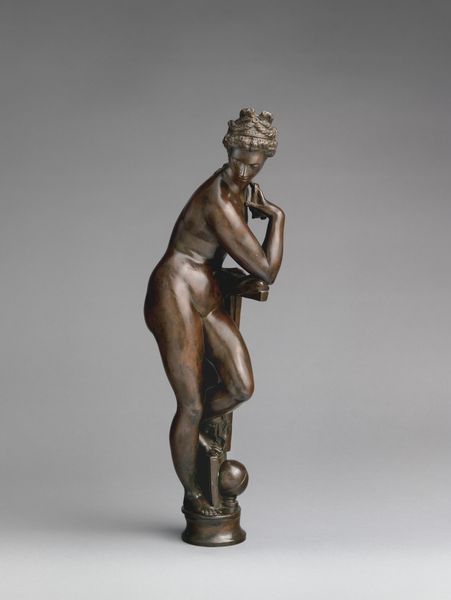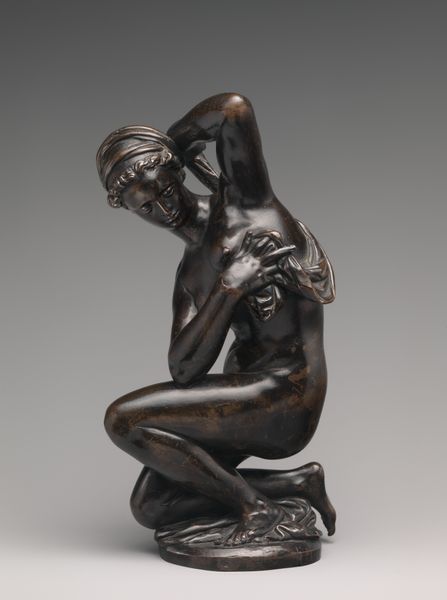
Seated youth with a lamp in the form of a snail shell 1575 - 1625
0:00
0:00
bronze, sculpture
#
imaginative character sketch
#
3d sculpting
#
3d model
#
product design sketch
#
bronze
#
3d character model
#
sculptural image
#
character sketch
#
sculpture
#
figure sketch
#
decorative-art
#
3d character modeling
#
graphite
#
male-nude
Dimensions: Overall (confirmed): 6 3/8 × 4 1/2 × 3 1/16 in. (16.2 × 11.4 × 7.8 cm)
Copyright: Public Domain
Curator: Here we have a bronze sculpture entitled “Seated youth with a lamp in the form of a snail shell,” created sometime between 1575 and 1625, and attributed to Andrea Briosco, also known as Riccio. Editor: My first impression is one of intriguing ambiguity. There’s a distinct air of whimsicality blended with the formal nature of classical sculpture. What strikes you foremost? Curator: I’m captivated by the figure's sinuous lines and the patina of the bronze. The contrast between the smooth skin of the youth and the rough texture of the base and the shell creates an interesting interplay of surfaces. Note the position of the youth—the grace belies a functional item. Editor: Absolutely, I’m also thinking about the object’s reception. Placed within a wealthy home, the sculpture surely served as a status symbol. But how would contemporary viewers have interpreted this fusion of classical form with a fantastical, almost grotesque element like the snail shell lamp? Curator: That’s a question worth pondering! The shell lamp adds an allegorical dimension. A snail moves slowly carrying its home on its back - there is the possible symbolism of inner light or illumination contrasted with grounded movement through the world. Riccio’s work often blends pagan and Christian motifs. Editor: That resonates, considering how humanist ideals shaped art during the late Renaissance. Artists like Riccio often navigated between classical sources and emergent philosophical inquiries about humanity’s place in the cosmos. How did social standing dictate interpretation, I wonder? Did the aristocracy embrace this "humanness" while others dismissed it? Curator: These early reception points remain intriguing due to their socio-cultural ambiguity. By looking closer at compositional decisions—the balance, pose, texture—we decipher something fundamental about visual vocabulary. What are we supposed to "see"? What inherent quality moves us regardless of socio-cultural grounding? Editor: Precisely. And considering the tumultuous era, seeing this artwork in our collection today asks us to consider artistic genius across cultural chasms: pieces of past interacting across societal waves impacting vision then, as well as what they may reveal to us, today.
Comments
No comments
Be the first to comment and join the conversation on the ultimate creative platform.
